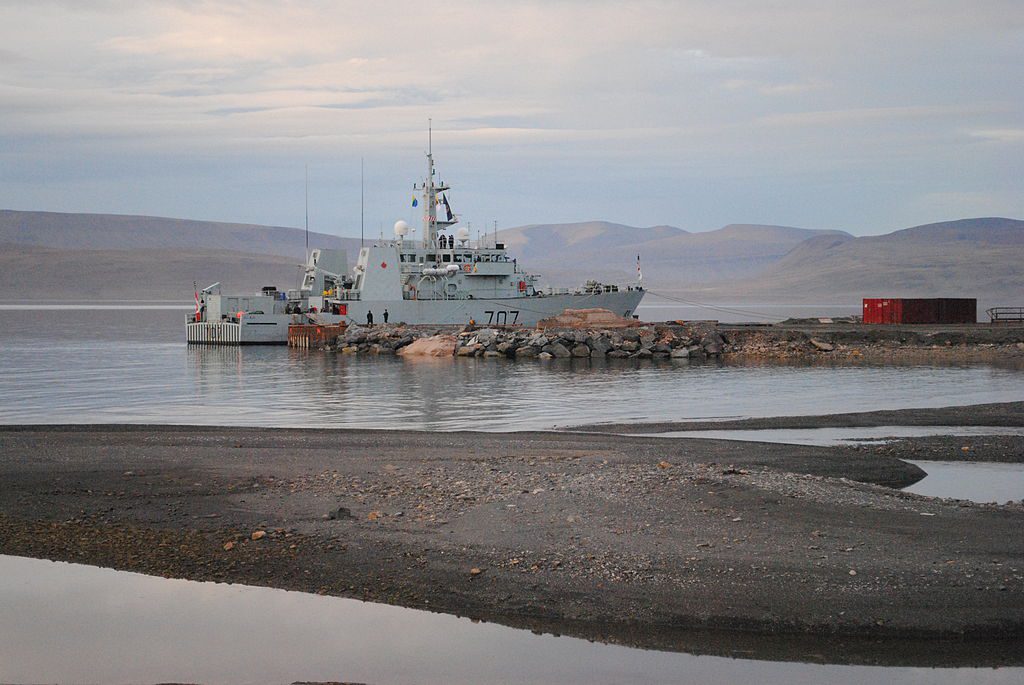HMCS GOOSE BAY at Nanisivik. Wikimedia Commons
 By Mike De Souza
By Mike De Souza
OTTAWA, March 2 (Reuters) – Canada’s military has again delayed the opening of a major new Arctic port, a sign the government is struggling to assert sovereignty over a remote resource-rich region.
The planned deep water naval facility at Nanisivik – some 3,100 km (1,900 miles) north of Ottawa – is one of the key components of Prime Minister Stephen Harper’s “use it or lose it” approach to the Arctic. The port, initially due to open in 2012, will now not be operational until 2018.
Nanisivik lies at the entrance to the Northwest Passage, which could become a shortcut for shipping between the Atlantic and Pacific Oceans as global warming gradually opens up ice-clogged waterways.
Canada claims sovereignty over the passage and the port at Nanisivik would help to maintain a presence in the region. The United States disputes Canada’s claim, saying the passage lies in international waters.
Ottawa said in 2007 the port would be open in 2012. In August 2013, it delayed the opening to 2017 and scaled back the facility to avoid cost overruns.
The defense ministry blamed the new delay on efforts to decontaminate land at Nanisivik, the site of a now-closed lead and zinc mine.
“The target date was adjusted to 2018 after (we) completed initial site investigations … to ensure all requirements of the facility could be met,” said spokeswoman Dominique Tessier.
Nanisivik was originally designed to include a permanent office but will operate as a four-month summer refueling and docking station.
The delay is another challenge for Canada’s plans to stamp a footprint on the Arctic. Ahead of the 2006 election that brought the Conservatives to power, they promised to build three armed ice-breakers for the region.
In 2007, Ottawa said instead it would build six to eight patrol ships that could operate in moderate ice conditions. In January this year, it diluted that commitment, promising five or six vessels.
The delays and cutbacks come at a time when the armed forces could well be asked to do more in the Arctic.
“The (military) recognizes that the implications of climate change may extend to security and defense activities, namely in the Arctic,” said a memo prepared last August for the Canadian military’s top bureaucrat. Reuters obtained the document through access to information legislation.
The memo also said the military lacked information on what impact climate change would have on Arctic operations. (Reporting By Mike De Souza; Editing by Bernard Orr)
© 2015 Thomson Reuters. All rights reserved.

 Join The Club
Join The Club











